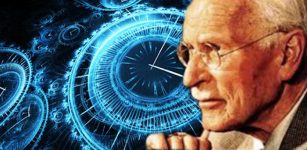Scientists Can “Steal” The Contents Of Your Dreams
MessageToEagle.com – Dreams have always been considered, just like thoughts to be very private. Can someone really steal the contents of your dreams?
No-one can read your thought or know what you dream, you will say. That is how it has been, but now everything has changed.
Your dreams are no longer just yours. Scientists have discovered a way to read your dreams!
A group of Japanese researchers led by Yukiyasu Kamitani of the ATR Computational Neuroscience Laboratories in Kyoto, Japan have successfully managed to decode the dreams of a group of volunteers and pinpointed when they were dreaming about such things as cars and women.
The scientists used functional neuroimaging to scan the brains of the participants when they slept. When the researchers detected changes in the brain waves of the subjects, it was a sign that the participants had started dreaming.
See also:
Face Blindness Makes You Surrounded By Strangers: Why Some People Cannot Recognize Faces?
‘Living Computers’ – People Ahead Of Their Time – Incredible Powers Of The Human Mind
Mysteries Of The Mind And Brain
Scientists woke up the subject and asked him what he had been dreaming about. The subject was then allowed to return to sleep. This procedure was repeated seven to ten times every day, in three-hour blocks, for each participant.
About 200 dream-related reports were collected. Although some of the dreams were out of the ordinary, for example a discussion with a famous actor most involved more mundane experiences from everyday life.
The researchers extracted key words from the participants’ verbal reports, and picked 20 categories – such as ‘car’, ‘male’, ‘female’, and ‘computer’ – that appeared most frequently in their dream reports.
Then, the participants were asked to look at the images as their brains were scanned a second time so that the researchers could compare brain activity data with the recordings made just before.
“Our study shows that during dreaming, some brain areas show activity patterns similar to those elicited by pictures of related contents.

“Thus, using a database of picture-elicited brain activity and a pattern recognition algorithm, we can read out, or decode, what a person might be seeing from brain scans during dreaming.
“In this study we were able to decode only basic object category information, but the method could be extended to decode more dynamic and emotional aspects of dreams,” Dr. Katamani said.
“This is an interesting and exciting piece of work,” says neuroscientist Jack Gallant at the University of California, Berkeley, of the work presented at the meeting. “It suggests that dreaming involves some of the same higher level visual brain areas that are involved in visual imagery.”
“It also seems to suggest that our recall of dreams is based on short-term memory, because dream decoding was most accurate in the tens of seconds before waking,” he adds.
© MessageToEagle.com










